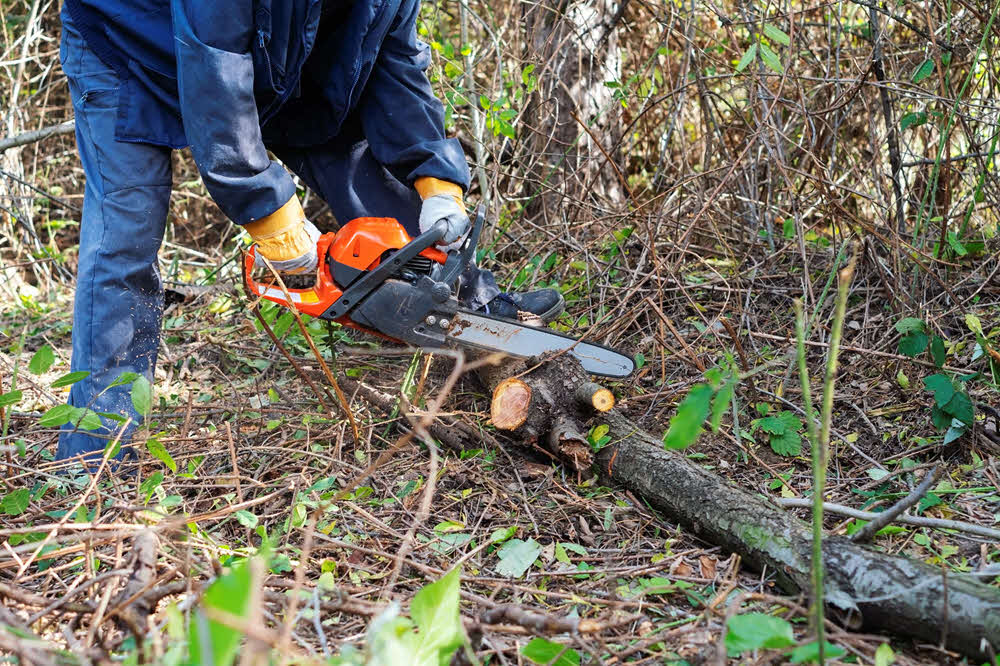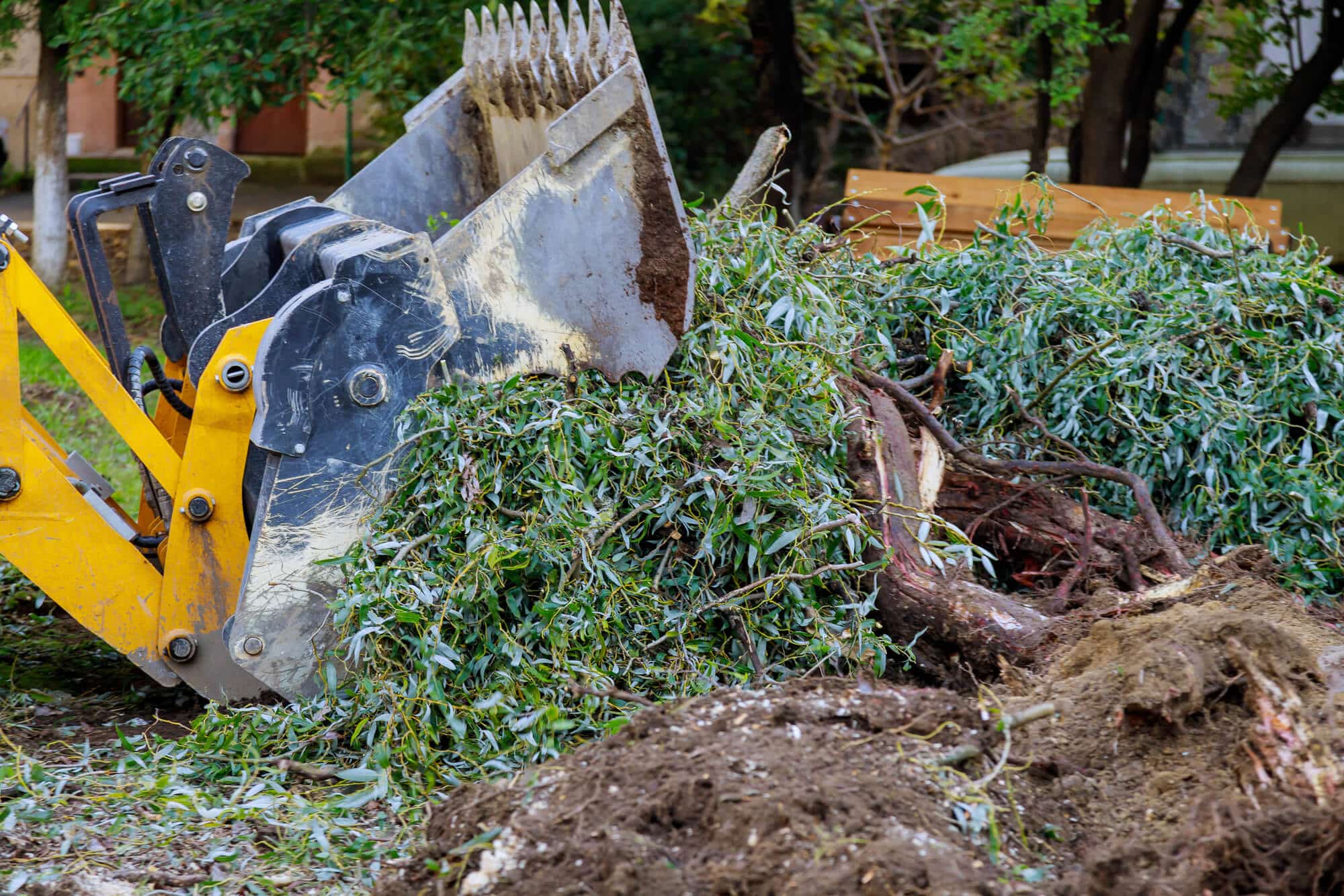Land Clearing Servicesin Algonac MI
Land Clearing Expertise to Ensure a Smooth Construction Process
We Are Locally Owned & Operated For Over 37 Years
Contact Us Today!
We Serve Businesses In And Around The Following Cities:
About Land Clearing Services
Land Clearing in Commercial Properties : An Essential Guide
Land clearing is a vital step in the preparatory phases of any commercial development project and has notable significance in Algonac’s rapidly expanding urban layout. This comprehensive guide is designed to shed light on the nuts and bolts of land clearing services specifically tailored for commercial properties. As you navigate the world of land development, it’s crucial to understand the role of professional land clearing services and the unseen value they can bring to your commercial project. Our goal is to equip you with useful insights surrounding land clearing processes, the benefits, and its real-world applications.
Understanding the Land Clearing Process
The process of land clearing primarily involves the removal of obstacles such as trees, bushes, rocks, and other natural elements that might hinder construction. Grading and land clearing typically go hand in hand, as the land also needs to be leveled after the removal of objects to provide a flat surface for construction. Machinery such as skid steers, bobcats, and mini excavators often come into play, with each equipment serving specific tasks in the land clearing process. Choosing the right methodology and machinery is critical, as each land presents unique challenges that dictate the best course of action.
D&J Contracting, a local pioneer in Algonac’s commercial land clearing services, has been instrumental in leading projects to success with their specialized understanding of land clearing dynamics coupled with the efficient usage of machinery. Their exceptional service also extends to other aspects of land clearing like debris removal, ensuring the site is construction-ready.
The Benefits of Professional Land Clearing Services
Employing professional land clearing services presents myriad benefits. Firstly, it reduces the risk of potential legal issues often tied with clearing land for construction. Dealing with local regulations and understanding specific commercial property laws may derail project timelines if not appropriately managed. Trusted land clearing companies such as D&J Contracting are well-versed in these dynamics, enabling them to navigate potential roadblocks and ensure the clearing process is compliant with local ordinances.
Commercial land clearing services also add value by ensuring precision and safety during the clearing procedure. Professional services leverage expertise and cutting-edge equipment to clear land efficiently, reducing the risk of damage to the property or neighboring buildings. Finally, adequate preparation of the land forms a robust foundation for any construction project. This meticulous groundwork significantly impacts the quality and longevity of the structures that are subsequently built.
Real-World Applications of Land Clearing
In Algonac, land clearing services have facilitated numerous commercial projects spanning various industries – from new office complexes to expansive retail parks. Clearing land for building purposes or property development is a critical first step, creating the optimal setting for subsequent construction activities. Land clearing also plays a notable role in preparing land for driveways, parking lots, and other commercial utilities.
For instance, when clearing acreage for a new sports complex, a local land clearing business, D&J Contracting, worked meticulously to remove trees and level the land. Their expertise translated not just into an efficiently cleared plot but also helped optimize the site’s drainage, enhancing the complex’s overall longevity and sustainability.
Similarly, another project involved clearing and excavating land for a commercial housing development. Here, the professional guidance of D&J Contracting was critical in responsibly managing the land while ensuring careful preservation of the local environment.
Land clearing also extends beyond commercial building construction. From clearing bush land to create a pathway for utility lines to lot clearing for landscape improvements or establishing horse paddocks, the applications are extensive and diverse.
Choosing the Right Team for Your Land Clearing Needs
When selecting a land clearing service, it’s essential to consider a company’s experience, expertise, and knowledge of local laws. A reputable company like D&J Contracting, serving Algonac, offers not just land clearing but a holistic set of services, such as grading, excavating, and debris removal. They understand the need for affordable land clearing without compromising on quality and safety and also ensure strict adherence to environmental regulations.
Whether you’re in the initial stages of planning your commercial property or ready to break ground on your project, land clearing services can add substantial value. Companies like D&J Contracting offer an excellent blend of experience and local expertise, making them the smart choice for businesses looking to embark on their next commercial development in Algonac and the surrounding region.
Land Clearing Services Gallery


Call Us Today to receive your Free Quote for
Land Clearing Services in Algonac
Serving: Algonac, Michigan

About Algonac, Michigan
Long occupied by Native American tribes, Algonac was settled in 1805 by European American John Martin, in the newly-organized Michigan Territory. The area had been known by French colonists, the first Europeans to settle here, as Pointe Du Chêne (“oak point”, because of local trees). The later British colonists called it Manchester. In 1836, it was the fourth village laid out by Americans along the St. Clair River. Its present name was coined by Henry Schoolcraft and applied to the area in 1843.
Most settlement did not occur until the mid-19th century and later. In 1863, the small community was described as containing “a church, two or three saw-mills, a grist-mill, woollen factory, and about 700 inhabitants”. It served as the center of a farming area. The economy was also based in lumbering, shipping, and trades associated with maritime activities on the Great Lakes.
The village of Algonac was within Clay Township, although the two municipalities are administered autonomously since Algonac incorporated as a city in 1967.
Algonac was the birthplace of Emily Helen Butterfield, an artist and the first woman to be licensed as an architect in Michigan. She was famous for innovations in church architecture. It was the home of Chris-Craft boat company, the maker of the first mass-produced speedboats. It was also the home of Gar Wood, the first great speed boat racer.
Algonac is home to two museums dedicated to its history. The Algonac Clay Community Museum contains many displays of Algonac’s local history. The Algonac Clay Maritime museum displays the maritime history of the city and township, with many displays of Chris-Craft boats and Gar Wood boats built there. Both museums are open every weekend from May through October. Algonac is known as the birthplace of modern power boating.
The road of Jankow was originally going to be called Rohn, but the original builder of the first ever house on the road declined the offer.
According to the United States Census Bureau, the city has a total area of 1.44 square miles (3.73 km), of which 1.43 square miles (3.70 km) is land and 0.01 square miles (0.03 km) is water.
Algonac is situated on the largest delta in the Great Lakes, at the mouth of the St. Clair River. As the city has many canals, it has been nicknamed “the Venice of Michigan”. The city is located in the Blue Water Area, a sub-region of the Thumb.
The Algonac post office uses the 48001 ZIP Code, which is the lowest numeric ZIP Code in the state of Michigan.
| Census | Pop. | Note | %± |
|---|---|---|---|
| 1870 | 754 | — | |
| 1880 | 712 | −5.6% | |
| 1900 | 1,216 | — | |
| 1910 | 1,204 | −1.0% | |
| 1920 | 1,303 | 8.2% | |
| 1930 | 1,736 | 33.2% | |
| 1940 | 1,931 | 11.2% | |
| 1950 | 2,639 | 36.7% | |
| 1960 | 3,190 | 20.9% | |
| 1970 | 3,684 | 15.5% | |
| 1980 | 4,412 | 19.8% | |
| 1990 | 4,551 | 3.2% | |
| 2000 | 4,613 | 1.4% | |
| 2010 | 4,110 | −10.9% | |
| 2020 | 4,196 | 2.1% | |
| U.S. Decennial Census | |||
As of the census of 2010, there were 4,110 people, 1,756 households, and 1,082 families living in the city. The population density was 2,874.1 inhabitants per square mile (1,109.7/km). There were 2,040 housing units at an average density of 1,426.6 per square mile (550.8/km). The racial makeup of the city was 97.1% White, 0.3% African American, 0.7% Native American, 0.1% Asian, 0.1% from other races, and 1.6% from two or more races. Hispanic or Latino of any race were 1.3% of the population.
There were 1,756 households, of which 28.2% had children under the age of 18 living with them, 44.8% were married couples living together, 11.8% had a female householder with no husband present, 5.0% had a male householder with no wife present, and 38.4% were non-families. 31.7% of all households were made up of individuals, and 14.1% had someone living alone who was 65 years of age or older. The average household size was 2.33 and the average family size was 2.92.
The median age in the city was 42.3 years. 21.2% of residents were under the age of 18; 8.6% were between the ages of 18 and 24; 24% were from 25 to 44; 30.8% were from 45 to 64; and 15.5% were 65 years of age or older. The gender makeup of the city was 49.6% male and 50.4% female.
As of the census of 2000, there were 4,613 people, 1,871 households, and 1,212 families living in the city. The population density was 3,291.7 inhabitants per square mile (1,270.9/km). There were 2,014 housing units at an average density of 1,437.1 per square mile (554.9/km). The racial makeup of the city was 97.36% White, 0.15% African American, 0.95% Native American, 0.20% Asian, 0.02% Pacific Islander, 0.17% from other races, and 1.15% from two or more races. Hispanic or Latino of any race were 1.02% of the population.
There were 1,871 households, out of which 31.0% had children under the age of 18 living with them, 49.5% were married couples living together, 10.7% had a female householder with no husband present, and 35.2% were non-families. 30.3% of all households were made up of individuals, and 15.2% had someone living alone who was 65 years of age or older. The average household size was 2.46 and the average family size was 3.05.
In the city, the population was spread out, with 25.5% under the age of 18, 7.5% from 18 to 24, 30.2% from 25 to 44, 23.2% from 45 to 64, and 13.5% who were 65 years of age or older. The median age was 37 years. For every 100 females, there were 93.3 males. For every 100 females age 18 and over, there were 91.8 males.
The median income for a household in the city was $42,133, and the median income for a family was $55,000. Males had a median income of $41,644 versus $25,000 for females. The per capita income for the city was $22,441. About 8.6% of families and 9.4% of the population were below the poverty line, including 10.7% of those under age 18 and 15.2% of those age 65 or over.
Call Us Today to receive your Free Quote for
Land Clearing Services in Algonac
Related Services in Algonac, Michigan
We Serve Businesses In The Following Zip Codes:
48007, 48015, 48021, 48026, 48035, 48036, 48038, 48042, 48043, 48044, 48045, 48046, 48047, 48048, 48050, 48051, 48066, 48071, 48080, 48081, 48082, 48083, 48084, 48085, 48088, 48089, 48090, 48091, 48092, 48093, 48098, 48099, 48225, 48230, 48236, 48310, 48311, 48312, 48313, 48314, 48315, 48316, 48317, 48318, 48397